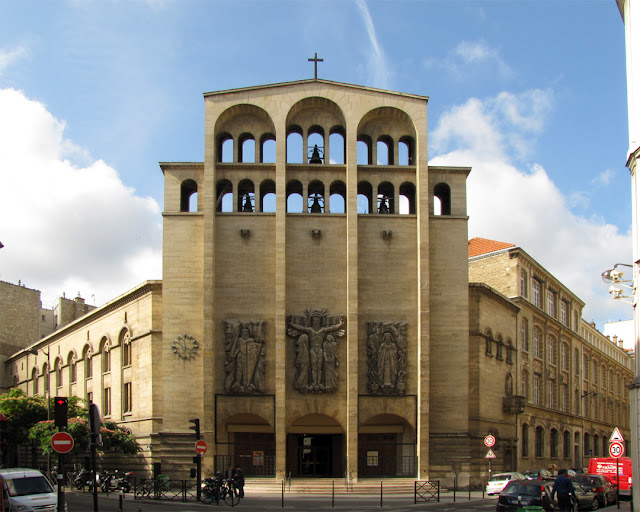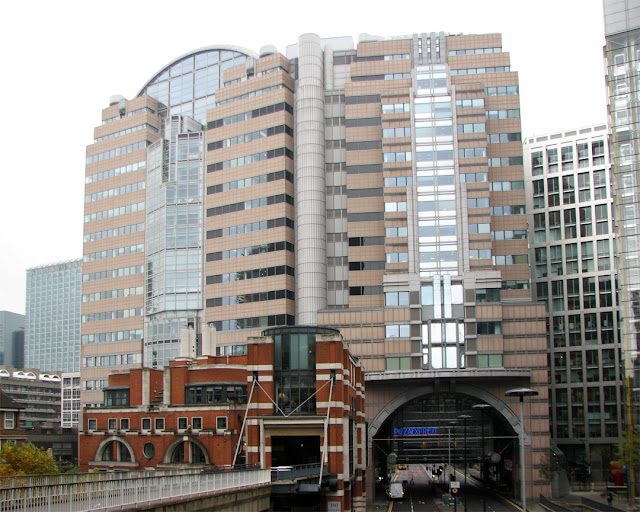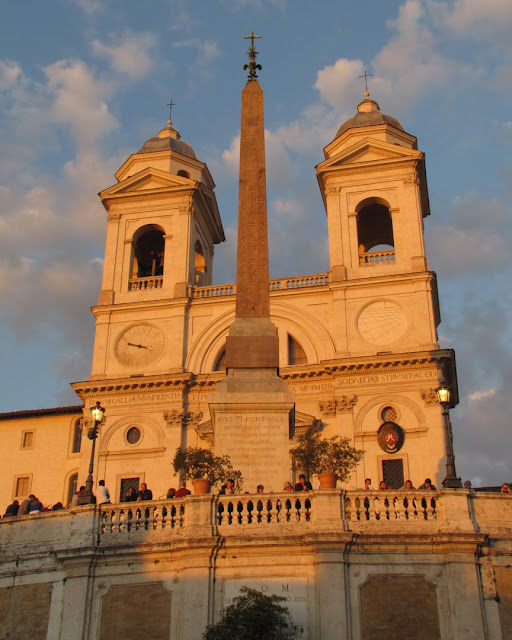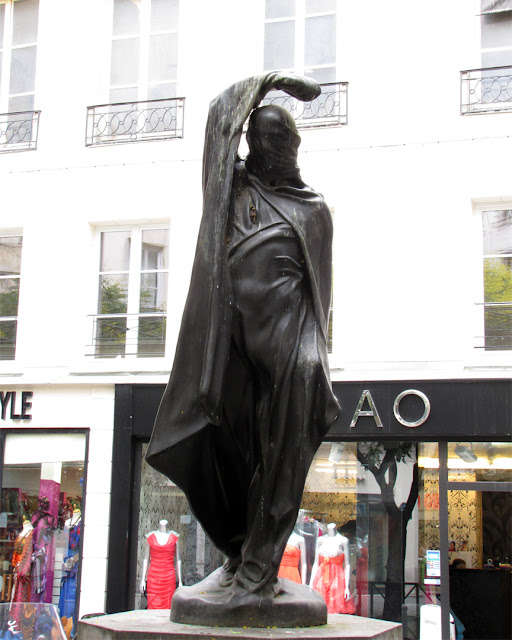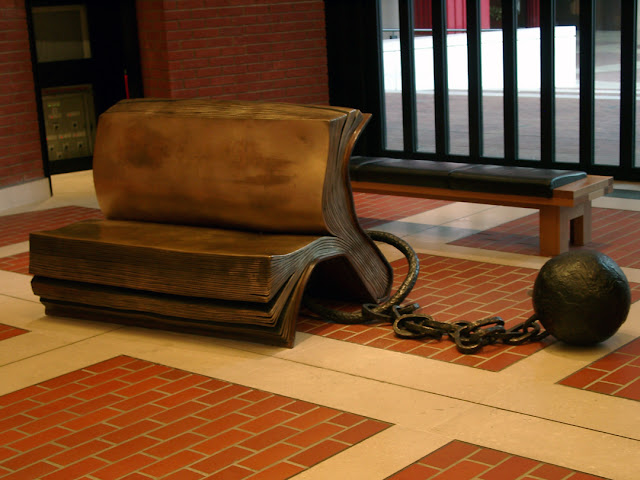Saturday, August 31, 2013
Sonic Malade
“Sonic Malade” by Greta Csatlòs
East Side Gallery
Mühlenstraße, Friedrichshain-Kreuzberg
Berlin, September 2011
See also: Berlin Wall - Test the Rest - Bruderkuß - Stay Free - Without Title - Vergesst mir die Liebe nicht - Niemandsland - Many Small People - Curriculum Vitae
Friday, August 30, 2013
Almondine Bakery
Cart outside Almondine bakery
Water Street, Brooklyn
New York, September 2008
“Hervé Poussot did not expect Superstorm Sandy to harm his beloved bakery. But Almondine on Water Street in Dumbo was located in Flood Zone A, just by a hair. On the night of the storm, the East River's waters rose, broke through a sidewalk-level window, and flooded his basement work area, destroying his ovens, mixers, and everything else. His insurance company didn't pay him a cent. After a lot of help from customers, his landlord, and the city's French baking community, he finally reopened a few weeks ago. Once again we can enjoy Almondine's excellent patisserie and, more importantly, some of the best baguettes in New York.” (Good Bread: Almondine Bakery Is Back Open, Serious Eats)
Thursday, August 29, 2013
Morts pour la France
Costante Garibaldi (Rome 1892 - Courtes Chausses 1915)
Bruno Garibaldi (Rome 1889 - Bois de Bollante 1914)
Relief on the plinth of the monument to Giuseppe Garibaldi by Vincenzo Cochi, 1907
Square Garibaldi
Quartier de Grenelle, 15th arrondissement
Paris, July 2012
“Today’s one is about the death of Bruno Garibaldi, son of Riciotti and grandson of the great Italian hero Giuseppe Garibaldi. Bruno Garibaldi was probably born in 1892 (the birth year is unsure). He was a student in Canterbury and then worked in Cuba. He came back to Europe to fight against Germany, and was a volunteer with his brother Costante in the Garibaldi Legion, which was a part of the 4th régiment de marche of the 1st regiment of the famous Légion Etrangère.” (The death of Bruno Garibaldi, Some WW1 Photographs…)
Wednesday, August 28, 2013
Henryk Sienkiewicz
Statue of Henryk Sienkiewicz by Czesław Dźwigaj, 1950
Piazzale Ferdowsi, Villa Borghese gardens
Rome, April 2013
Quo vadis, Domine (Where are you going, Lord?), Quo Vadis
Born into an impoverished Polish noble family in Russian-ruled Congress Poland, in the late 1860s he began publishing journalistic and literary pieces. In the late 1870s he traveled to the United States, sending back travel essays that won him popularity with Polish readers. In the 1880s he began serializing novels that further increased his popularity. He soon became one of the most popular Polish writers of the turn of the 19th and 20th centuries, and numerous translations gained him international renown, culminating in his receipt of the 1905 Nobel Prize in Literature for his “outstanding merits as an epic writer.” (Henryk Sienkiewicz, Wikipedia)
Tuesday, August 27, 2013
Monday, August 26, 2013
Sunday, August 25, 2013
Mur pour la Paix
Mur pour la Paix (Wall for Peace) by Clara Halter and Jean-Michel Wilmotte, 2000
Champ-de-Mars
Quartier du Gros-Caillou, 7th arrondissement
Paris, July 2012
“Not far from the mighty Eiffel Tower, across the famous green esplanade the Champ de Mars, sits the Wall for Peace, a humble structure of glass and metal that some Parisians are trying to tear down.
While it may be the city's most overlooked monument, the wall attracts a constant stream of passersby, drawn to the gleaming metal and glass panes that catch the sun. The word ‘peace’ is inscribed in 32 languages and 12 alphabets on the glass and 20-foot-tall metal columns standing sentries on either side.” (Wall For Peace monument in Paris in danger of being torn down, NY Daily News)
Saturday, August 24, 2013
Sant'Onofrio
The cloister of the church of Sant'Onofrio
Piazza di Sant'Onofrio, Gianicolo
Rome, April 2013
“A simple and small cloister was built in the XVth century, but for the Jubilee Year 1600 it was decorated with a long series of frescoes showing episodes from the life of the hermit St. Onophrius of Egypt; each episode is accompanied by a heading in Latin and Italian. The account of the life of St. Onophrius is almost identical to that of St. Paul the First Hermit, who also lived in the Egyptian desert.” (Chiostro di S. Onofrio, A Rome Art Lover's Web Page)
Friday, August 23, 2013
Cross from Above
The cross above the entrance of the Berliner Dom (Berlin Cathedral)
Am Lustgarten
Berlin, September 2011
Thursday, August 22, 2013
Starry Night
La Nuit étoilée (The Starry Night) by Vincent van Gogh, 1889
Museum of Modern Art
West 53rd Street
New York, September 2007
“This morning I saw the country from my window a long time before sunrise, with nothing but the morning star, which looked very big,” van Gogh wrote to his brother Theo, from France. Rooted in imagination and memory, The Starry Night embodies an inner, subjective expression of van Goghs response to nature. In thick, sweeping brushstrokes, a flamelike cypress unites the churning sky and the quiet village below. The village was partly invented, and the church spire evokes van Gogh's native land, the Netherlands. (The Starry Night, MoMA)
Wednesday, August 21, 2013
Starry Night Over the Rhone
Nuit étoilée sur le Rhône (Starry Night Over the Rhone) by Vincent van Gogh, 1888
Musée d'Orsay
Rue de la Légion d'Honneur
Quartier Saint-Thomas-d'Aquin, 7th arrondissement
Paris, July 2005
“Included a small sketch of a 30 square canvas - in short the starry sky painted by night, actually under a gas jet. The sky is aquamarine, the water is royal blue, the ground is mauve. The town is blue and purple. The gas is yellow and the reflections are russet gold descending down to green-bronze. On the aquamarine field of the sky the Great Bear is a sparkling green and pink, whose discreet paleness contrasts with the brutal gold of the gas. Two colourful figurines of lovers in the foreground.” (Letter from Vincent van Gogh to Theo van Gogh, Arles, 28 September 1888, van Gogh's Letters)
Tuesday, August 20, 2013
Ferdowsi
Statue of Ferdowsi by Abolhassan Sadighi, 1958
Piazzale Ferdowsi, Villa Borghese gardens
Rome, April 2013
“According to legend, Sultan Mahmud of Ghazni offered Ferdowsi a gold piece for every couplet of the Shahnameh he wrote. The poet agreed to receive the money as a lump sum when he had completed the epic. He planned to use it to rebuild the dykes in his native Tus. After thirty years of work, Ferdowsi finished his masterpiece. The sultan prepared to give him 60,000 gold pieces, one for every couplet, as agreed. However, the courtier Mahmud had entrusted with the money despised Ferdowsi, regarding him as a heretic, and he replaced the gold coins with silver. Ferdowsi was in the bath house when he received the reward. Finding it was silver not gold, he gave the money away to the bathkeeper, a refreshment seller and the slave who had carried the coins. When the courtier told the sultan about Ferdowsi's behaviour, he was furious and threatened to execute him. Ferdowsi fled Khorasan, having first written a satire on Mahmud, and spent most of the remainder of his life in exile. Mahmud eventually learned the truth about the courtier's deception and had him either banished or executed. By this time, the aged Ferdowsi had returned to Tus. The sultan sent him a new gift of 60,000 gold pieces but as the caravan bearing the money arrived in Tus it met a funeral procession: the poet had died from a heart attack.” (Ferdowsi, Wikipedia)
Monday, August 19, 2013
Ponte de la Chiesa
Ponte de la Chiesa leading to Calle dei Morti
Campo San Cassiano, Santa Croce
Venice, September 2012
Sunday, August 18, 2013
Truth Is the Light
Worshipful Company of Wax Chandlers, Wax Chandlers' Hall
Gresham Street, City of London
London, October 2009
Saturday, August 17, 2013
Pont Rouelle
Pont Rouelle (the part over the left arm of the Seine)
Quai de Grenelle
Quartier de Grenelle, 15th arrondissement
Paris, July 2005
Friday, August 16, 2013
Saint Ignatius
Statue of Saint Ignatius by Camillo Rusconi, 1728
Sant'Ignazio Church
Piazza di Sant'Ignazio
Rome, April 2013
Thursday, August 15, 2013
Without Title
“Ohne Titel” (Without Title) by Alexey Taranin
East Side Gallery
Mühlenstraße, Friedrichshain-Kreuzberg
Berlin, September 2011
“The 1,316-meter-long section of the Berlin Wall, located along the Spree River near Berlin's Ostbahnhof, or East Train Station, is the longest stretch left in the city. Most of the rest of the 43-kilometer-long concrete barrier (the much longer part around the outside of West Berlin was made of barbed wire fencing) was dismantled soon after the border became redundant. When the artists began work in 1990, however, Germany had yet to unify. ‘In June 1990, when I first painted the wall it was still real -- there was a border crossing nearby on the Oberbaum Bridge and I couldn't go over to West Berlin with my Soviet passport,’ said Moscow artist Alexey Taranin. While much of the west side of the Wall was covered in graffiti during the Cold War, East Germans were kept well away from the barrier, and it remained unsullied -- providing a perfect canvas for the East Side Gallery.” (Recreating the Past: The Berlin Wall Gets a Makeover, Spiegel Online)
See also: Berlin Wall - Test the Rest - Bruderkuß - Stay Free - Sonic Malade - Vergesst mir die Liebe nicht - Niemandsland - Many Small People - Curriculum Vitae
Wednesday, August 14, 2013
Resonating Bodies #2
The bugle of “Resonating Bodies” by Tony Cragg, 1996
Robert F. Wagner, Jr. Park, Battery Park City
New York, September 2007
“Resonating Bodies comprises a pair of bronzes in a kind of bland, unthreatening public art-ese: instantly recognizable figuration with a hint of play, at large but not daunting scale. One of the two bronzes is in the form of a mandolin or a lute, a classic trope in art history (think Caravaggio, or Frans Hals in the Louvre); the other resembles the bell of a tuba, but it only twists once and has no valves, so perhaps it’s more like a bugle. Their ridges and grooves – sound waves, perhaps; Cragg began his career as a scientist – invite you to run your hands over them, a privilege of public sculpture, though as this is New York you will probably want to use some Purell afterward.” (Tony Cragg, Resonating Bodies, 1996, — Art in Common)
See also: Resonating Bodies #1
Tuesday, August 13, 2013
Saint-Ferdinand-des-Ternes
Église Saint-Ferdinand-des-Ternes
Rue Saint-Ferdinand
Quartier des Ternes, 17th arrondissement
Paris, July 2012
“This church was built between 1937 and 1957 (after an interruption during the war) to make up for the narrowness of Notre Dame of Compassion. Of Roman Byzantine style, this building of Paul Théodon, Frédéric Bertrand and Pierre Durand is quite modern. Its façade spreads out through a lacework of vaulted arches whereas the believer is welcomed by imposing low reliefs by Georges Muguet, representing Saint Thérèse and Saint Ferdinand. Even though the interior was decorated by fifteen different artists, it testifies of a great harmony owed to a same thematic centered around the Saint Sacraments, and to a same technical approach, those of primitive Italians. An important thing to note, the chapiters of the pillars of the choir present decorations which are quite interesting.” (Church Saint-Ferdinand-des-Ternes, Patryst - La culture à la carte)
Monday, August 12, 2013
Antonio Gramsci
The grave of Antonio Gramsci (1891–1937), intellectual and politician
One of the founders of the Italian Communist Party
Cimitero acattolico (Non-Catholic Cemetery)
Via Caio Cestio
Rome, May 2011
“After his party was outlawed by Benito Mussolini’s fascists, Gramsci was arrested and imprisoned (1926). At his trial the fascist prosecutor argued, ‘We must stop his brain from working for 20 years.’ In prison, despite rigorous censorship, Gramsci carried out an extraordinary and wide-ranging historical and theoretical study of Italian society and possible strategies for change. Plagued with poor health in the 1930s, he died not long after being released from prison for medical care.” (Antonio Gramsci, Encyclopædia Britannica)
Sunday, August 11, 2013
Three-Colored Dog
“Three-Colored Dog” by Alexander Calder, 1973
Peggy Guggenheim Collection
Palazzo Venier dei Leoni
Seen from the Canal Grande (Grand Canal)
Venice, September 2012
Saturday, August 10, 2013
Friday, August 9, 2013
Tramway des Maréchaux
Alstom Citadis 402 low-floor tram
Paris tramway Line 3 or tramway des Maréchaux
Boulevards des Maréchaux
15th arrondissement
Paris, July 2012
Thursday, August 8, 2013
Sallustian Obelisk
Sallustian Obelisk
Church of the Santissima Trinità dei Monti
Piazza della Trinità dei Monti
Rome, April 2013
“In front of the church stands the Obelisco Sallustiano, one of the many obelisks in Rome, moved here in 1789. It is a Roman obelisk in imitation of Egyptian ones, originally constructed in the early years of the Roman Empire for the Gardens of Sallust near the Porta Salaria. The hieroglyphic inscription was copied from that on the obelisk in the Piazza del Popolo.” (Trinità dei Monti, Wikipedia)
See also: Obelisk of Montecitorio - Macuteo Obelisk - Quirinale Obelisk - Pulcino della Minerva - Minerveo Obelisk - Esquiline Obelisk
External links: List of obelisks in Rome (Wikipedia)
Wednesday, August 7, 2013
O Germany, Pale Mother
“O Deutschland bleiche Mutter” (O Germany, Pale Mother) by Fritz Cremer, 1966
(The title is a verse from the poem Deutschland by Bertolt Brecht)
Bodestraße
Museumsinsel (Museum Island)
Berlin, September 2011
“The latter is particularly interesting—the work itself (which benefits from a fine large-size colour reproduction) of course, if only for its proposed location, the Memorial at Mauthausen Concentration Camp, but also its genesis and the commentary from Christa Lichtenstern. Fritz Cremer (1906-1993) was an Official Artist of the German Democratic Republic who discussed Henry Moore in a 1975 issue of Bildende Kunst, a journal which had denounced Moore as ‘late-bourgeois’. Now, Cremer also attacked Moore’s art—in the particular newspeak of the age inherited from Stalin—as ‘undialectic’ and ‘pre-historic’, and he got Moore’s views on Greek and early art completely wrong: but, and this is the excellent point made by Christa Lichtenstern, Cremer paid Moore the greatest possible homage in practice by getting inspiration from Moore in his own work, as evidenced by O Deutschland, bleiche Mutter.” (Henry Moore: Work - Theory - Impact, Reviewed by Antoine Capet, Cercles)
Tuesday, August 6, 2013
Chrysler Building
Stainless steel crown and gargoyles of the Chrysler Building
Lexington Avenue
New York, September 2008
“The government of Abu Dhabi bought a 90 percent stake in the Chrysler Building on Tuesday for $800 million from German real estate investors and Tishman Speyer. But while it might seem that the buyer, the Abu Dhabi Investment Council, got a controlling interest in the Art Deco tower, a landmark, for that kind of money, that was not the case. Despite having only a 10 percent holding, Tishman Speyer Properties will continue to control the property and manage it, much as it has since 1997, because it controls the land beneath the 77-story tower, with its trademark stainless steel crown, gargoyles and elevator cabs that evoke the chrome-laden autos of the 1930s.” (Abu Dhabi Buys 90% Stake in Chrysler Building, The New York Times)
Monday, August 5, 2013
L'homme au bras levé
“L'homme au bras levé” (The Man with the Risen Arm) by Olivier Brice, 1973
Place du Caire
Quartier de Bonne-Nouvelle, 2nd arrondissement
Paris, July 2012
Sunday, August 4, 2013
Porta San Pancrazio
Coat of arms of Pope Urban VIII, born Maffeo Barberini
Porta San Pancrazio, Gianicolo
Rome, April 2013
“Urban’s pontificate coincided with the ministry of Cardinal de Richelieu of France and with the decisive period of the Thirty Years’ War. His policy, when contrasted with that of his successor, Innocent X, appears to have been decidedly pro-French and hostile to the Roman Catholic cause in Germany. In fact, he desired the extinction of Protestantism everywhere, but, because he ultimately feared Habsburg domination in Italy, he withheld his support from them and allied with their enemy Richelieu. This alliance destroyed the Habsburgs’ claim to be considered the exclusive champions of Roman Catholicism and so turned the Thirty Years’ War into a conflict of dynastic interests that resulted not so much in the triumph of Protestantism as in the ruin of Germany.” (Urban VIII, Encyclopædia Britannica)
Saturday, August 3, 2013
Fondamenta Gherardini
Fruit and vegetable peata, Rio di San Barnaba
With the Ponte dei Pugni (Bridge of Fists) in background
Fondamenta Gherardini, Dorsoduro
Venice, September 2012
“The peata (also known as the piatta) is the largest of all traditional Venetian cargo boats. It was used throughout Venice to transport a wide range of large, bulky materials, particularly those needed for construction. It was designed to hold items ranging from 100 to 800 pounds (45 kilograms to 363 kilograms).” (Peata, Venipedia)
Friday, August 2, 2013
Sitting On History
“Sitting On History” by Bill Woodrow, 2004
British Library
Euston Road
London, September 2003
“‘Sitting on History,’ with its ball and chain, refers to the book as a receptacle of information. History is filtered through millions of pages of writing, making the book the major vehicle for research and study. Woodrow proposes that although one absorbs knowledge, one appears to have great difficulty in changing one’s behaviour as a result.” (Bill Woodrow: Sitting on History, Cass Sculpture Foundation)
Thursday, August 1, 2013
Saint-Jacques-Saint-Christophe-de-la-Villette
Église Saint-Jacques-Saint-Christophe de la Villette
Place de Bitche
Quartier de la Villette, 19th arrondissement
Paris, July 2005
In Paris, a number of buildings (churches, chapels, hospitals) dedicated to the Apostle have been built since the 11th century. His worship was encouraged by the fact that the road to Santiago de Compostela for pilgrims from Northern and Eastern Europe passed through there. In the Middle Ages, this Saint’s popularity was such that his feast day (25 July) was celebrated in the capital. Few of these buildings can still be seen today. Those which remain include the parish churches of Saint-Jacques-du-Haut-Pas and Saint-Jacques-Saint-Christophe-de-la-Villette, built in the 17th and 19th centuries respectively, when the worship of Saint James was already decreasing in popularity. (On the trail of Saint Jacques, Mairie de Paris)
Subscribe to:
Posts (Atom)


















